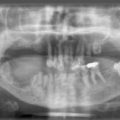Electron therapy
Electron beams provide an ideal treatment for superficial PTVs extending from the skin surface to typically up to 5 cm deep. The major advantage over photon beams is the sharp fall off in the dose at depth. However, it should be noted that at higher electron energies (>15 MeV), the slope is not so steep and underlying tissue may receive a significant dose. The radiobiological effect is the same as that for x-rays.
The electron field is defined by an applicator which, depending on design, may be placed in contact with the skin, or with a small standard standoff. The beam may be further conformed by the addition of standard ‘endframes’ (a range of circles or rectangles) placed at the end of the applicator, or custom cut-outs may be constructed for individual patient PTV shapes.
The majority of electron treatments are not computer planned as the set up is fairly straightforward and the patient can be considered as a uniform water medium. In these cases, standard depth doses and output factor charts may be employed to select beam energy and calculate the MU required. However, there are many commonly encountered sites where a computer calculated dose distribution would be of benefit, such as in the presence of heterogeneities, e.g. bone, lung, or air cavities, or where there is oblique incidence of the electron beam to the patient surface which can cause significant changes in dose deposition.
Manual calculations are usually based on the central axis depth dose of a standard 10 cm × 10 cm field but it is important to understand the limitations of applying these standard data to real clinical conditions. Electron beams interact with patient contours in unexpected ways and these interactions vary significantly over the clinical range of electron energies (typically 4–20 MeV) so computer planning, or experimental verification can be essential in some treatments.
The widely used computer pencil beam algorithms provide a reasonable estimate of dose in heterogeneous media but should be used as an indication of dose distributions rather than determining absolute dose. Most treatment planning systems require extensive data input in order to generate MU calculations for the wide range of field sizes clinically required, and the full commissioning of electron planning is often considered impractical.
A recent innovation is the use of Monte Carlo algorithms for electron beam calculation. This offers the potential for more accurate dose distributions and equally usefully, MU calculation for irregular cut-outs.
Stay updated, free articles. Join our Telegram channel

Full access? Get Clinical Tree




